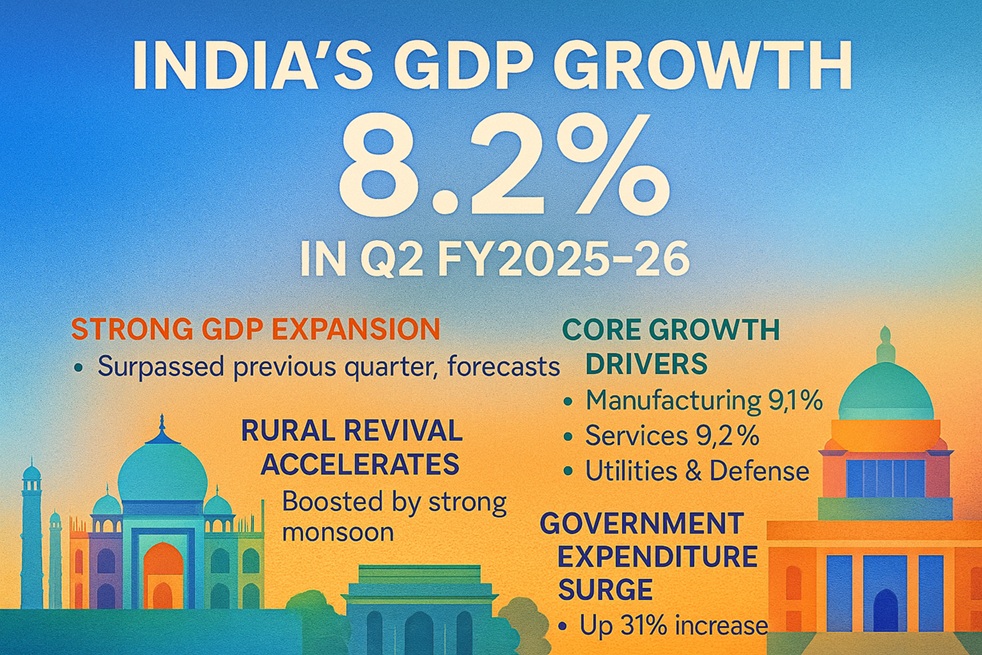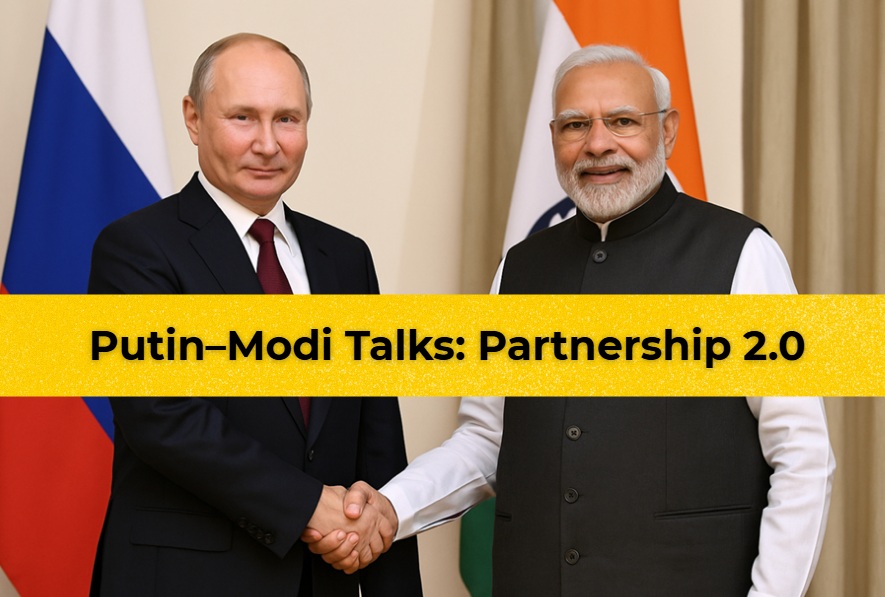The Modi government has announced a major reform in India’s Goods and Services Tax (GST) structure, a decision being hailed as both a relief for Indian consumers and a strategic counter to U.S. President Donald Trump’s tariff war.
At the 56th GST Council meeting, chaired by Union Finance Minister Nirmala Sitharaman, the government approved a simplified GST framework. The 12% and 28% tax slabs have been abolished, leaving only two major slabs – 5% and 18%. The new rates will be effective from 22 September.
This move is not just about reducing prices; it signals a strong economic and geopolitical message.
Relief for Consumers, Boost for Markets
From soap to small cars, hundreds of everyday consumer goods will now become cheaper. Household appliances such as air conditioners, refrigerators, and other items earlier taxed at 28% will now fall under the 18% bracket. Products previously in the 12% slab are down to 5%. Essential kitchen goods remain at either zero or 5%.
For the common Indian household, this translates to lower inflation and increased savings. With reduced tax rates, disposable income rises, enabling more purchases. Increased consumption will, in turn, strengthen domestic demand and energize industries across sectors.
Current GST Slabs (Effective from 22nd September 2025)
0% GST (Exempted Items)
Fresh fruits & vegetables
Milk, eggs, meat, curd
Unbranded cereals & pulses
Books, newspapers
Educational & health services
5% GST
Packaged food items (tea, coffee, sugar, spices, edible oil, etc.)
Common medicines
Footwear (up to a certain price limit)
Transport services (railways, roadways, economy-class air travel)
Small household items (kitchen essentials, etc.)
18% GST
Consumer durables & electronics (TVs, refrigerators, washing machines, ACs, etc.)
Soaps, shampoos, personal care products
Restaurants (not under composition scheme)
Telecom, IT, and financial services
Automobiles (small cars, two-wheelers, etc.)
Branded garments
40% GST (Special “Sin Tax” Slab – Unchanged)
Pan masala, gutkha, tobacco
Alcoholic beverages
Luxury betting/gambling/online gaming
Certain luxury/sin goods
Abolished Slabs
12% slab – merged into 5% or 18%
28% slab – reduced to 18%
A Calculated Response to Trump’s Tariffs
Donald Trump’s administration had imposed steep tariffs—some as high as 50%—on Indian goods, aiming to pressure India over issues like oil imports from Russia and geopolitical alignments. Washington believed such punitive measures would cripple India’s economy and force New Delhi into concessions.
Instead, Prime Minister Modi’s government has turned the crisis into an opportunity for self-reliance and growth. By reducing GST, India is redirecting its production and consumption inward. Companies that once relied heavily on the U.S. market will now find a vast and growing demand within India itself.
Trump may have hoped to weaken India, but the move has backfired: while American tariffs have made Indian exports less competitive in the U.S., India’s domestic market has become even more attractive to global investors.
Strategic Economic Impact
The GST reform has multi-layered effects:
Boost to Consumption: Lower prices will encourage spending, reviving demand for products like electronics, vehicles, and home goods.
Job Creation: With demand rising, industries will expand production, generating employment opportunities, especially in labor-intensive sectors.
Higher Compliance: With fewer and lower GST rates, businesses will prefer to operate within the tax net. This increases government revenue even though rates have been slashed.
Export Competitiveness: Reduced production costs mean Indian goods can compete globally, especially in markets beyond the U.S., such as Europe, Latin America, and Asia.
Investment Magnet: Simplified taxation makes India a more attractive destination for foreign companies.
A Message to the World: India Will Not Be Bullied
While the U.S. chose protectionism, India has opted for liberalization and domestic empowerment. Russian President Vladimir Putin even echoed this sentiment, declaring that the “colonial era is over” and that no nation can be subjugated through economic coercion anymore.
For India, this decision is not just about tax reform but about economic independence. It signals that India will not bow to American tariff threats. Instead, it will leverage its vast domestic market and diversify trade partnerships globally.
Psychological and Market Boost
Markets have already reacted positively, with stock indices rising on news of the reform. The announcement has improved investor confidence and boosted public sentiment. The government has effectively conveyed that India is resilient and adaptable in the face of external economic pressure.
A Win-Win Decision
For consumers: Cheaper goods and relief from inflation.
For businesses: Lower compliance burden, reduced costs, and new growth opportunities.
For the government: Higher compliance and increased revenue in the long run.
For India’s global standing: A confident, self-reliant economy that refuses to be intimidated by tariffs.
Conclusion
The Modi government’s GST reform is more than just a tax adjustment—it is a strategic masterstroke. By abolishing the 12% and 28% slabs, simplifying taxation, and lowering costs, the government has given relief to millions of Indians while strengthening the economy against external shocks.
What Trump intended as a blow to India’s economy has instead awakened its domestic strength. The tariff war meant to corner India has ended up fueling its rise as a stronger, more self-reliant economic power.
From 22 September onwards, Indian consumers will feel the direct impact of this decision in their wallets, while the world will witness how a crisis was transformed into an opportunity—something Prime Minister Modi has consistently championed.
#pmmodi, #gst, #dailydozes, #gstcouncil, #nirmalasitharaman, #unionfinanceminister, #taxslab, #gstreforms, #gst2, #modigovernment, #donaldtrump, #trump, #trumptariffs, #putin, #tradedeals, #usindiarelations, #modimasterstroke, #indianeconomy, #modidiplomacy, #russiaukrainewar, #useconomy,







